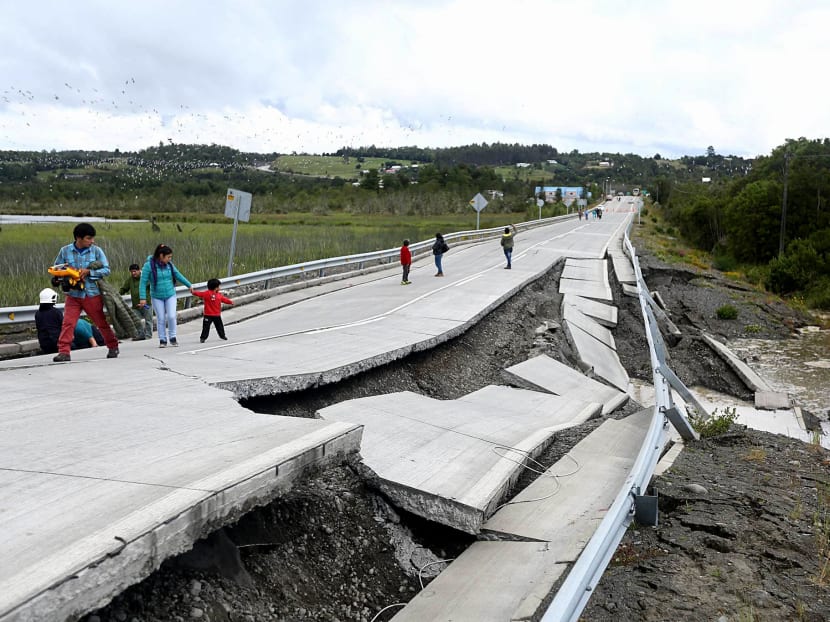Quake-prone Pacific nations hold joint tsunami drills
MANILA — Quake-prone countries around the Pacific Ocean on Wednesday (Feb 15) began a joint exercise testing their ability to deliver timely warnings of approaching tsunamis to tens of millions of people living along the coast.

File photo of people inspecting damage caused on highway 5 south on Chiloe Island off the Pacific coast of southern Chile, by a 7.7-magnitude earthquake on December 25, 2016. Photo: AFP
MANILA — Quake-prone countries around the Pacific Ocean on Wednesday (Feb 15) began a joint exercise testing their ability to deliver timely warnings of approaching tsunamis to tens of millions of people living along the coast.
The annual "Pacific Wave" exercise is taking place in a region where nearly eight in 10 of the world's tsunamis — giant waves usually caused by underwater earthquakes — occur, the UN Educational, Scientific and Cultural Organisation said.
Though no actual evacuations will be conducted during the three days of drills, civil defence offices will rehearse the relaying of tsunami warnings for large quakes off the coasts of Chile and Peru, Colombia and Ecuador, the Philippines, the Solomon Islands, Tonga and Vanuatu.
The warnings will be sent to the participants by tsunami monitoring centres in Hawaii, Japan, and, for the first time, China.
"This is very important for us because it allows us to receive advance warnings of tsunamis long before they arrive," seismologist Rommel Grutas of the Philippine Institute of Volcanology and Seismology told AFP in Manila.
Dr Grutas said one scenario involved a movement of the Manila Trench, a large and unstable undersea rift that runs the length of the Philippine archipelago and which triggers at least one minor earthquake each month.
A large movement of the trench launched a quake and a tsunami on Manila Bay and nearby areas in the 1800s, he added.
Dr Grutas said only his agency was involved this year because the government's civil defence office was busy addressing the fallout from a 6.5-magnitude quake that killed at least six people on the large southern island of Mindanao last week.
UNESCO said its Intergovernmental Oceanographic Commission set up a Pacific tsunami warning system to address the recurring threat in 1965, after a tsunami hit the coasts of Chile, Hawaii, Japan, and the Philippines, killing 224 people.
About 76 per cent of the world's deadly tsunamis take place in the Pacific Ocean and connected seas, with one destructive local tsunami striking every year or two and an ocean-wide tsunami hitting the region per century, it added.
The Pacific features the so-called "Ring of Fire", a horseshoe-shaped string of volcanoes and areas of seismic activity lining the rim of the ocean. AFP





